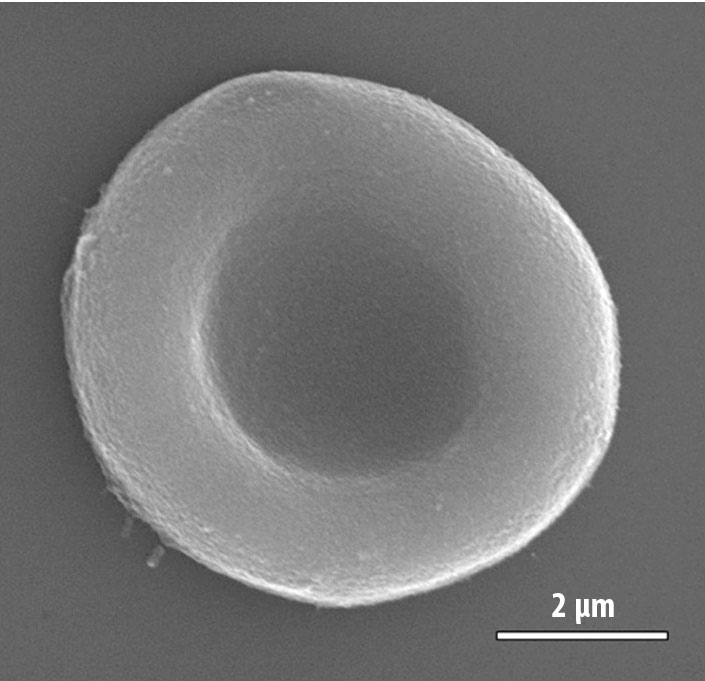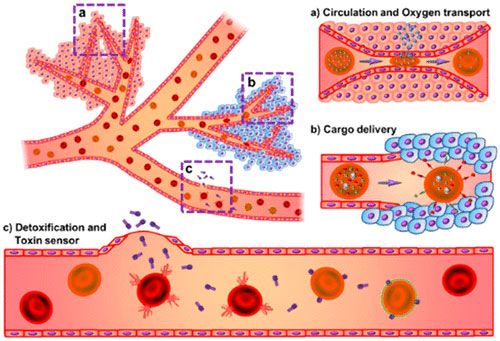
9th June 2020 Synthetic red blood cells mimic natural ones, plus have new abilities Scientists have created blood cell replicas – using a combination of polymers and silica – which not only mimic the real thing, but are also capable of delivering new cargoes.
Scientists have previously tried to develop synthetic red blood cells that mimic the favourable properties of natural ones – such as flexibility, oxygen transport and long circulation times. But so far, most artificial red blood cells have had one or a few, but not all, key features of the natural versions. Now, researchers reporting in the journal ACS Nano have made synthetic red blood cells that have all of the cells' natural abilities, plus a few new ones. Red blood cells (RBCs) take up oxygen from the lungs and deliver it to tissues around the body. These disk-shaped cells hold millions of molecules of haemoglobin – an iron-containing protein that binds oxygen. RBCs are highly flexible, which allows them to squeeze through tiny capillaries and then bounce back to their original shape. They also contain proteins on their surface that allow them to circulate through blood vessels for a long time without being mistakenly gobbled up by immune cells. A team led by Wei Zhu of the South China University of Technology and C. Jeffrey Brinker of the University of New Mexico wanted to make artificial RBCs that had similar properties to natural ones, but could also perform new jobs such as therapeutic drug delivery, magnetic targeting and toxin detection.
The scientists made synthetic cells by first coating donated human RBCs with a thin layer of silica. They then layered positively and negatively charged polymers over the silica-RBCs, and then etched away the silica – producing replicas. Finally, the team coated the surface of these replicas with natural RBC membranes. These artificial cells were similar in size, shape, charge and surface proteins to natural cells, and were flexible enough to squeeze through model capillaries without losing their shape. Tested in mice, the synthetic RBCs lasted for more than 48 hours, with no observable toxicity. The researchers loaded the artificial cells with different cargoes to demonstrate their carrying abilities – haemoglobin, an anticancer drug, a toxin sensor, and magnetic nanoparticles. The team also showed that the new RBCs could act as decoys for a bacterial toxin. Future studies will explore the potential of the artificial cells in medical applications, such as new cancer therapies and toxin biosensing, the researchers say.
Comments »
If you enjoyed this article, please consider sharing it:
|








